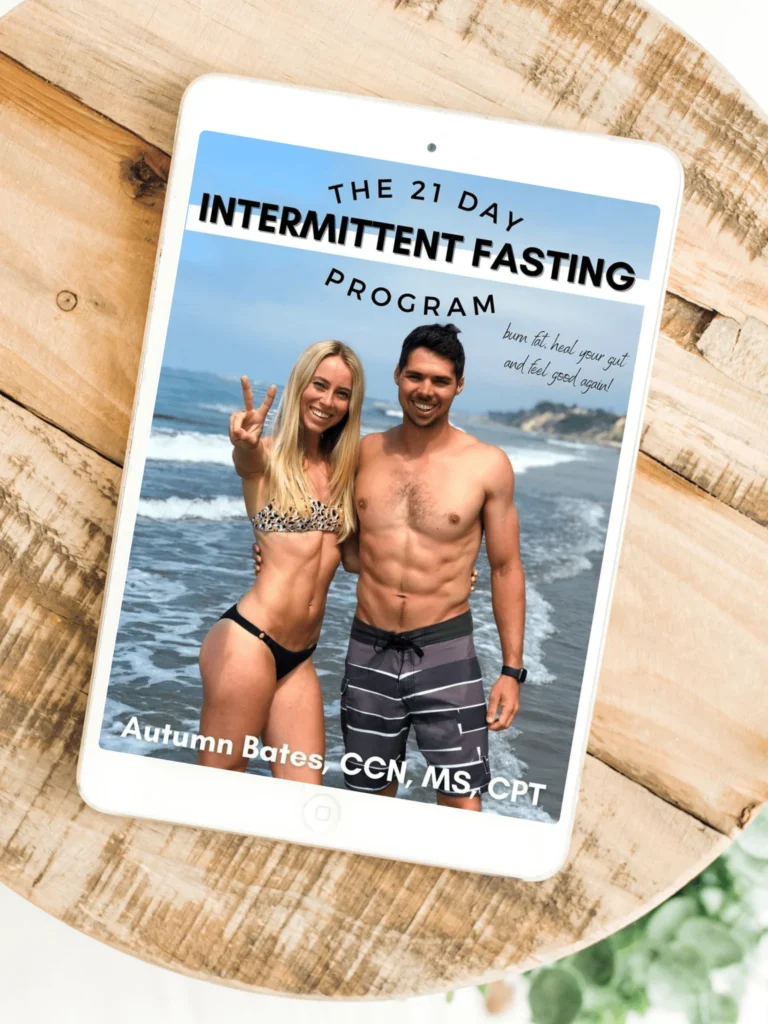These are the best cardio workouts to lose belly fat – plus how long and how often to do them for fastest results.
When it comes to achieving a weight loss goal (and more specifically reductions in belly fat), we know that balancing our stress hormone, cortisol, is an extremely important factor to consider.(1) Depending on the type of cardio you’re doing, some exercises will help lower your cortisol, while others will temporarily spike your cortisol but ultimately help bring it back down (when done properly). These typically range depending on their intensity and duration.
Today, I’m sharing the details on what types of cardio workouts you should be doing and how long you should be doing them in order to achieve your weight loss goals!
Your Cardio Schedule
In order to keep cortisol levels balanced to help the body reduce belly fat while incorporating cardio, it’s important to get a mix of each of these types of workouts. Here’s a good rule of thumb when planning your cardio routine:

1-2x per week: High Intensity Cardio
Aka high intensity interval training. This will provide your biggest burst of cortisol because it is the most intense. With high intensity cardio workouts, you can hone in on boosting your performance and power. However, because these have such a high toll on your cortisol levels, you need more rest and repair between these workouts. Aim for 1-2x per week.
3-4x per week: Moderate Intensity Cardio
A common example of this would be jogging. This moderate intensity is great for building up cardiovascular endurance. However, don’t be fooled by the slightly lower intensity level of this type of cardio. Studies have found that consistent moderate intensity cardio done for longer periods of time can lead to elevated cortisol levels.(4) Aim for 3-4 days per week of this cardio group.
Daily: Low Intensity Cardio
My personal favorite low intensity cardio ~ walking! Low intensity cardio is best done as consistently as possible to keep the body moving and helping to lowering cortisol levels.(2) Plus, when any of these cardio options are done outside, you get an added perk of getting exposed to negative ions to further bring cortisol levels down.(3) Because the intensity is so low, you can (and should!) do this daily.
My Fave Cardio Options ~ High, Moderate and Low Intensity
It’s important to note that nearly every one of the exercises listed below can have elements of high, low and moderate intensity. How you use the cardio options will depend which category it falls under. Other activities (such as surfing and playing a sport) can also fall under one of these three categories and will be discussed further in a future blog post.
30-60 Minutes of Swimming
Intensity: Stead state, moderate
Whether you’re swimming in a pool, lake or ocean, this is a fantastic, moderate intensity exercise to incorporate. Try alternating between breast stroke, freestyle and backstroke for some variety.
10-20 Minutes of Sprint Intervals
Intensity: High
You may have noticed that the Complete Intermittent Fasting Bundle has a sprint workout option. I love heading over to my local track when using sprint intervals. You can also incorporate sprints into your jog by starting off with a 3-5 minute warm up, then alternating each minute with sprints.

Tap into fat burning
The 21 Day Intermittent Fasting Program
The 21 Day Intermittent Fasting Program provides step-by-step strategies to help you use Intermittent Fasting with delicious, protein-packed meals to support fat loss, reduce hunger, and boost gut health.
30-60 Minutes of Walking
Intensity: Low
30 minutes is the minimum I would recommend per day. Really, the more walking you can get in, the better. And it doesn’t have to be all at once! You can break up your walking by 10-15 minute intervals throughout the day.
10-20 Minutes of Swimming Sprint Intervals
Intensity: High
I highly recommend using a pool for this option so that you can better track your progress. There should be a timer easily visible from the pool so you can literally work against the clock and try and beat your previous time.
20-30 Minutes of Stairs
Intensity: Steady state, moderate
Depending on your current fitness level, this might head into “high intensity” territory. If you find that you’re quickly running out of breath, consider this a high intensity training until you build up stamina.
5-10 Minutes of Jump Rope
Intensity: High
Typically, any type of jumping will be considered high intensity. You can do 5-10 minutes straight of jump rope or cycle 30-60 seconds of jump rope between strength training exercises to turn your entire workout into a HIIT routine.
30-60 Minutes of Cycling
Intensity: Steady state, moderate
There are certainly ways to make cycling a high intensity cardio workout, but if you’re headed out for a bike ride, then this will likely be considered a moderate cardio option. Depending on how casual your ride is, you could even consider this a low intensity cardio. But if you’re using cycling as a cardio option, it likely will fall under the moderate level.

Jumpstart your wellness journey
7 Day Detox
The 7 Day Detox provides a complete reset for your body, naturally promoting detoxification while curbing sugar cravings with a structured plan.
30 Minutes of Jogging
Intensity: Steady state, moderate
Probably the most common form of cardio. But remember, just because it’s moderate in intensity it doesn’t mean you should be performing this everyday! Make sure to swap in low intensity and high intensity training as well as other forms of moderate cardio for cross training.
Studies
https://link.springer.com/article/10.1007/s13679-018-0306-y
https://pubmed.ncbi.nlm.nih.gov/18787373/
https://www.frontiersin.org/articles/10.3389/fpsyg.2019.00722/full

















